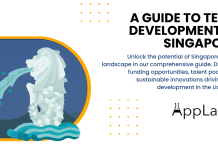Key Takeaways
- Slovakia’s SEO landscape in 2025 is driven by mobile-first strategies, AI-powered search, and Google’s market dominance.
- SMEs face digital skill gaps, creating strong demand for external SEO expertise and localized strategies.
- E-commerce and local search growth present major opportunities for businesses to capture market share.
The landscape of Search Engine Optimization (SEO) in Slovakia in 2025 presents a compelling intersection of opportunity, technological evolution, and market-specific challenges. As the Slovak digital ecosystem continues to mature, businesses and marketers are confronted with an environment defined by high internet penetration, increasing mobile usage, and a rapidly growing e-commerce sector. Understanding this dynamic landscape is essential for companies seeking to capture visibility, drive traffic, and maximize conversions in one of Central Europe’s most digitally engaged markets.

Slovakia boasts an internet penetration rate exceeding 91%, with over 5 million individuals actively using online services. This highly connected population provides a fertile audience for digital marketing campaigns, yet the business sector’s pace of digital adoption has lagged behind consumer expectations. Small and medium-sized enterprises (SMEs), which form the backbone of the Slovak economy, often lack the in-house expertise or resources to implement sophisticated SEO strategies. This creates a pronounced market demand for external SEO services, from technical optimization and content marketing to AI-driven strategies tailored to local search behaviors.
The search engine landscape in Slovakia is overwhelmingly dominated by Google, which commands over 95% of the market share. This near-monopoly simplifies the strategic focus for businesses, emphasizing the critical importance of aligning digital strategies with Google’s ranking factors, including the increasingly significant E-E-A-T principles—Experience, Expertise, Authoritativeness, and Trustworthiness. At the same time, the rise of AI-powered search features, such as Generative Engine Overviews, is reshaping user interaction with search results, requiring businesses to adopt “Generative Engine Optimization” (GEO) approaches that optimize content not just for traditional search listings but also for AI-generated summaries.
Mobile-first design and optimization are no longer optional in Slovakia. Over 57% of web traffic is generated through mobile devices, and the average mobile internet download speed has risen sharply, creating an expectation for fast, seamless, and intuitive user experiences. For e-commerce businesses, mobile optimization directly correlates with conversion rates, as a significant portion of online transactions is executed via smartphones. Product categories such as Fashion & Apparel, Electronics, and Food & Beverage are experiencing high growth, further emphasizing the need for targeted, data-driven SEO campaigns that align with consumer trends and purchasing behaviors.
Despite the technologically savvy consumer base, Slovakia faces structural challenges in digital skill development. The shortage of IT professionals, coupled with fragmented government initiatives to foster digital literacy among businesses, presents both a challenge and an opportunity. For SEO agencies and consultants, this gap represents a market for specialized expertise, offering services that empower local businesses to compete effectively in a digitally driven economy.
In summary, the state of SEO in Slovakia in 2025 is shaped by a highly connected and mobile-focused population, an evolving search ecosystem dominated by Google, rapid e-commerce growth, and a pressing need for external expertise among SMEs. Businesses that strategically invest in mobile-first optimization, AI-driven content strategies, and locally relevant SEO practices are well-positioned to capture market share, increase online visibility, and achieve sustainable growth in a competitive Central European digital landscape.
But, before we venture further, we like to share who we are and what we do.
About AppLabx
From developing a solid marketing plan to creating compelling content, optimizing for search engines, leveraging social media, and utilizing paid advertising, AppLabx offers a comprehensive suite of digital marketing services designed to drive growth and profitability for your business.
At AppLabx, we understand that no two businesses are alike. That’s why we take a personalized approach to every project, working closely with our clients to understand their unique needs and goals, and developing customized strategies to help them achieve success.
If you need a digital consultation, then send in an inquiry here.
Or, send an email to [email protected] to get started.
The State of SEO in Slovakia in 2025
- Executive Summary
- Slovakia’s Digital Landscape in 2025: A Macro View
- The Slovak Search Ecosystem: Dominance and Disruption
- The SEO Market in Slovakia: Services, Costs, and Key Players
- Strategic Pillars for SEO Success in Slovakia
- Challenges and Opportunities: A Strategic Analysis
- Strategic Recommendations
1. Executive Summary
Digital Landscape Overview
Slovakia in 2025 presents a paradoxical digital environment—its population demonstrates high internet penetration and advanced user maturity, yet its business sector, particularly SMEs, lags in adopting cutting-edge digital strategies. This disparity offers a lucrative opportunity for SEO professionals to bridge the gap and unlock business growth.
- Population Connectivity
- Internet penetration: 91.8%, equating to approximately 5.05 million active internet users.
- Urban populations show higher digital engagement compared to rural regions, though broadband expansion continues to narrow this divide.
- Search Engine Market
- Google dominates with a near-total monopoly of 95.28%–95.35% market share.
- Other search engines hold negligible influence, making Google-first strategies essential for SEO success.
Mobile-First Dominance
The Slovak internet ecosystem is increasingly mobile-driven, reflecting broader European digital consumption trends.
- Traffic Share: Mobile accounts for 57.51% of overall web traffic.
- Connection Speeds: Median mobile internet download speeds stand at 62.59 Mbps, marking a 35.8% year-on-year growth.
- Strategic Implications:
- Mobile-optimised websites, AMP integration, and responsive UX are non-negotiable.
- Local SEO tailored for on-the-go searches will be a growth driver, especially in sectors such as retail, travel, and food services.
E-commerce and Market Growth
Slovakia’s e-commerce ecosystem is entering a phase of rapid expansion, driven by younger consumers, improved logistics, and cross-border digital trade.
- E-commerce Valuation (2025): $2.56 billion
- Projected CAGR (2025–2030): 10.98%
- Key Sectors Benefiting from SEO:
- Fashion and retail
- Consumer electronics
- Online services and subscription platforms
SEO Market Economics
SEO services in Slovakia reflect global pricing benchmarks but reveal a growing gap between corporate investment and SME adoption.
- Median Monthly SEO Costs: $1,000 – $5,000 for technical and comprehensive services.
- Agency Hourly Rates: $100 – $300 per hour.
- Freelancer Rates: Between $15 – $35 per hour, offering cost-effective but less scalable options.
| Provider Type | Pricing Model | Cost Range | Typical Clientele |
|---|---|---|---|
| SEO Agencies | Hourly/Monthly | $100–$300/hour, $1k–$5k/month | Medium to large enterprises |
| Freelancers | Hourly/Project | $15–$35/hour | SMEs, startups |
| In-house Teams | Salaried | $40k–$70k/year (est.) | Established corporations |
Challenges and Opportunities
Slovak businesses face unique challenges in SEO adoption, but these challenges also highlight areas of growth potential.
- Challenges:
- Limited digital intensity among SMEs.
- Low adoption of AI-driven SEO tools and automation.
- Underutilisation of content localisation and Slovak linguistic SEO.
- Opportunities:
- Mobile-first strategies to dominate in a smartphone-centric economy.
- Emphasis on E-E-A-T (Experience, Expertise, Authoritativeness, Trustworthiness) to meet evolving Google ranking standards.
- Leveraging local language SEO and cultural nuances to outperform global competitors.
- Growing appetite for content marketing and voice search optimisation, particularly among Gen Z users.
Future Outlook for SEO in Slovakia
The next wave of SEO evolution in Slovakia will be characterised by precision, trust, and adaptability. Success will rely on how businesses integrate SEO into holistic digital strategies rather than treating it as a standalone service.
- Mobile-first indexing will dominate algorithmic priorities.
- AI-enhanced SEO tools will gain momentum as enterprises adopt machine learning for keyword targeting and predictive search analytics.
- Cultural and linguistic relevance will differentiate leaders from laggards in an increasingly competitive market.
| SEO Trend | Relevance in Slovakia 2025 | Growth Potential |
|---|---|---|
| Mobile-first SEO | Extremely High | Strong |
| AI-powered SEO tools | Emerging | Strong |
| Localised content & Slovak language SEO | High | Strong |
| Voice search optimisation | Medium | Moderate |
| E-E-A-T implementation | Very High | Strong |
2. Slovakia’s Digital Landscape in 2025: A Macro View
A. Internet Penetration and Connectivity
To assess the state of SEO in Slovakia in 2025, it is crucial to examine the country’s digital infrastructure and evolving consumer behaviours. Slovakia demonstrates an advanced digital maturity, defined by near-universal internet penetration, widespread mobile adoption, and a robust e-commerce sector. However, this maturity also implies that growth opportunities will derive less from onboarding new internet users and more from improving user engagement, retention, and competitive visibility within an already saturated market.
Internet Penetration and User Base
Slovakia in 2025 presents one of the highest levels of internet accessibility in Central Europe.
- Total Internet Users: 5.05 million individuals connected to the web.
- Penetration Rate: 91.8% of the population, leaving only 8.2% offline.
- Trend: A minor contraction of -0.5% (24,000 fewer users) compared to the previous year, attributed not to disengagement but to saturation of the market.
- SEO Implication:
- Growth will not stem from user expansion but from enhanced visibility and competitive differentiation within a highly connected digital audience.
Mobile Connectivity and Its SEO Impact
Slovakia’s digital ecosystem is increasingly mobile-first, supported by high connectivity rates and remarkable improvements in mobile speeds.
- Mobile Connections: 6.20 million active SIM-based connections, representing 113% of the total population.
- Decline in Numbers: A reduction of 158,000 (-2.5%) connections year-over-year, explained by users consolidating multiple SIMs.
- Broadband Share: 96.4% of mobile connections use 3G, 4G, or 5G networks.
- Speed Metrics:
- Mobile download speeds: 62.59 Mbps, an increase of +35.8% (16.51 Mbps gain) year-over-year.
- Fixed broadband speeds: 90.28 Mbps, positioning Slovakia ahead of several regional peers.
- SEO Relevance:
- Enhanced mobile speeds eliminate a key barrier to mobile-first indexing.
- Faster site performance directly correlates with improved Core Web Vitals, higher rankings, and stronger user engagement.
- Responsive design, AMP, and optimised media will be indispensable for businesses competing in this market.
Connectivity Trends and Market Signals
| Metric | 2024 Value | 2025 Value | Change (%) | SEO Implications |
|---|---|---|---|---|
| Internet Users | 5.07M | 5.05M | -0.5% | Market saturation, focus shifts to optimisation |
| Internet Penetration Rate | 91.8% | 91.8% | Stable | No growth in users, increased competition |
| Mobile Connections | 6.36M | 6.20M | -2.5% | Consolidation of SIMs, stronger single-user focus |
| Broadband Share (Mobile) | 95.8% | 96.4% | +0.6% | Enhanced mobile readiness |
| Median Mobile Download Speed | 46.08 Mbps | 62.59 Mbps | +35.8% | Supports mobile-first SEO strategies |
| Fixed Broadband Download Speed | 85.14 Mbps | 90.28 Mbps | +6.0% | Strong baseline for desktop SEO |
Strategic Takeaways for SEO in Slovakia 2025
- Saturated Market Dynamics
- With penetration nearing totality, SEO competition intensifies. Success will depend on content relevance, brand authority, and E-E-A-T factors rather than user acquisition.
- Mobile-First Imperative
- Slovakia’s mobile-centric behaviour and improved connectivity demand fast-loading, mobile-optimised platforms to secure rankings.
- User Experience as Ranking Signal
- Speed and navigational fluidity are no longer optional; they are baseline expectations tied directly to bounce rates, conversions, and search performance.
- Localisation Opportunities
- With high digital literacy, users expect culturally nuanced, Slovak-language content, making localisation a competitive differentiator against global players.
B. The Evolving E-commerce Market: A Growth Engine for Search
E-commerce has become one of the most accurate indicators of Slovakia’s digital economic vitality in 2025. The sector is not only expanding rapidly but also reshaping consumer behaviours, payment preferences, and marketing strategies. For SEO professionals, the e-commerce surge translates directly into heightened demand for visibility, discoverability, and trust within an increasingly competitive digital retail space.
- Market Valuation
- Estimated size: $1.92 billion – $2.56 billion in 2025.
- Global rank: 56th largest e-commerce market worldwide.
- Projected growth: CAGR of 10.98% between 2025 and 2030.
- Retail Penetration
- E-commerce share of total retail sales: 10.2% in 2025.
- Forecast increase: 12.2% by 2029.
- Strategic implication: Digital platforms are moving from supplementary retail channels to primary consumer touchpoints.
Mobile-First Transformation in E-commerce
Mobile commerce is now the dominant channel for digital transactions, reshaping the way Slovak consumers browse, research, and purchase online.
- Market Share of Mobile in 2024: 56% of total e-commerce revenue.
- Projected CAGR for Mobile Commerce (2025–2030): 12.86%, outpacing desktop transactions.
- SEO Implication:
- Mobile-first optimisation becomes central not only for traffic acquisition but also for direct conversions and revenue impact.
- Features such as voice search optimisation, mobile-friendly product pages, and faster checkout flows will serve as decisive competitive advantages.
Product Category Breakdown
The Slovak e-commerce landscape demonstrates diverse consumer interests, with distinct growth potential across categories.
| Product Category | Market Share (2024) | Strategic Significance | Growth Potential (2025–2030) |
|---|---|---|---|
| Fashion & Apparel | 26.5% | Market leader; highly competitive for SEO keywords | Moderate |
| Electronics | 20.2% | Strong demand; product reviews and comparison content critical | Moderate |
| Furniture & Homeware | 11.8% | Increasingly search-driven via visual and lifestyle content | Moderate |
| Food & Beverage | 6.4% (est.) | Emerging category with strong digital adoption | High (12.63% CAGR) |
- Fashion & Apparel remains the cornerstone of e-commerce revenues, intensifying competition for search rankings and brand visibility.
- Electronics are driven by comparison-based searches and high-volume transactional queries, making structured product pages vital.
- Food & Beverage stands out as the fastest-growing segment, offering opportunities for local SEO, seasonal campaigns, and subscription-based content strategies.
Evolution of Payment Preferences
Payment behaviour in Slovakia is undergoing a significant transformation, directly shaping conversion funnels and SEO strategy for e-commerce brands.
- Dominant Methods in 2024:
- Credit/Debit Cards: 41% share, maintaining consumer trust and familiarity.
- Emerging Methods:
- Buy-Now-Pay-Later (BNPL): Projected CAGR of 13.49% through 2030, reflecting consumer appetite for financial flexibility.
- SEO and UX Impact:
- Keywords and content targeting “BNPL shopping in Slovakia” or “installment-friendly e-commerce” will gain visibility.
- Optimised landing pages highlighting flexible payment options will improve conversions.
SEO Opportunities in Slovakia’s E-commerce Growth
- Category-Specific SEO
- Target transactional long-tail keywords in sectors like fashion and electronics.
- Build authority through E-E-A-T-driven content in food and beverage niches.
- Mobile-First Campaigns
- Optimise for voice search, visual search, and local intent queries.
- Implement fast-loading mobile product pages to align with rising mobile penetration.
- Payment-Centric Optimisation
- Highlight flexible methods like BNPL in meta descriptions, ad copy, and product pages.
- Ensure secure, trust-driven UX signals to strengthen ranking performance.
Visualising the Growth Trajectory
Projected E-commerce Market Growth in Slovakia (2025–2030)
$ Billions
3.5 |
3.0 | █
2.5 | █
2.0 | █
1.5 | █
-----------------------------------------
2025 2026 2027 2028 2029 2030
- 2025: $2.56B
- 2030 (projected): ~ $3.5B
- Growth rate: 10.98% CAGR, reinforcing the symbiotic link between SEO and e-commerce expansion.
C. Digital Maturity: Benchmarking Slovakia Against the EU
The Paradox of Slovak Digital Development
Slovakia in 2025 presents a distinctive paradox: while its citizens display strong digital engagement and growing reliance on online services, the business sector—especially small and medium-sized enterprises (SMEs)—remains under-digitalised. This imbalance between consumer demand and business readiness directly shapes the trajectory of SEO in the country.
- Consumer Digital Readiness
- A Eurobarometer survey (2025) revealed that 82% of Slovak citizens believe digitalisation improves daily life.
- Younger generations (16–24) demonstrate digital skills comparable to EU averages, providing a digitally fluent consumer base.
- High internet penetration (91.8%) ensures nearly universal access to digital platforms.
- Business-Side Limitations
- Many enterprises show low levels of adoption of advanced technologies.
- Digital intensity among SMEs lags significantly behind the EU average.
- Businesses often lack in-house expertise, creating reliance on external SEO professionals.
Structural Barriers Limiting SEO Advancement
Several systemic challenges inhibit Slovakia’s ability to fully embrace the digital transformation, with direct implications for SEO competitiveness.
- Skills Shortage
- Shortfall of qualified IT and mathematics educators, slowing skill pipeline development.
- Limited domestic digital talent hinders the creation of in-house SEO and digital marketing teams.
- Policy and Governance Challenges
- Despite a government budget of €1.58 billion allocated for digitalisation, progress is slowed by:
- Fragmented management of digital skills programs.
- Lack of institutional capacity to implement reforms effectively.
- Inconsistent coordination across ministries and agencies.
- Despite a government budget of €1.58 billion allocated for digitalisation, progress is slowed by:
- Implications for SEO
- Shortage of digital expertise translates to outsourcing opportunities for agencies and consultants.
- Businesses prioritise cost-efficient, ROI-driven SEO strategies over experimental digital projects.
Comparative Analysis: Slovakia vs. EU Averages
| Indicator | Slovakia (2025) | EU Average (2025) | Gap | SEO Implication |
|---|---|---|---|---|
| Internet Penetration | 91.8% | 90%+ | Comparable | High competition for user attention |
| Digital Skills (Youth, 16–24) | Strong | Strong | Parity | Long-term consumer readiness |
| SME Digital Intensity | Low | Medium–High | Negative Gap | Reliance on external SEO services |
| Advanced Tech Adoption (AI, Cloud) | Low | Moderate–High | Negative Gap | Opportunities for SEO firms offering tech-integrated solutions |
| Government Digital Budget | €1.58B | Higher in larger states | Relative Deficit | Structural dependency on private sector initiatives |
Strategic Opportunities for SEO Professionals
The digital maturity gap is not a weakness but a market opportunity for SEO providers who can bridge the divide.
- For Agencies and Consultants
- Provide turnkey SEO solutions for SMEs with limited internal expertise.
- Focus on technical SEO, multilingual SEO, and mobile-first strategies to align with consumer behaviour.
- For Businesses
- Outsourcing SEO ensures immediate access to expertise without the cost of building in-house teams.
- Leveraging content localisation and E-E-A-T strategies provides competitive advantages over less digitally advanced rivals.
- For Policymakers
- Strengthening digital skills education will reduce reliance on external consultants in the long term.
- Streamlining digitalisation initiatives can foster an environment where SEO and digital marketing flourish.
Visualising Slovakia’s Digital Maturity Gap
Digitalisation Gap: Citizens vs. Businesses (2025)
% Level of Digital Maturity
100 |█████████████████████ Consumers (82% demand for digital services)
80 |
60 |████████ SMEs (Low digital intensity)
40 |
20 |
0 |--------------------------------
Citizens Businesses
- Citizens are digitally mature, actively demanding online solutions.
- Businesses trail significantly, leaving room for SEO professionals to close the gap through expertise-driven strategies.
3. The Slovak Search Ecosystem: Dominance and Disruption
A. The Reign of Google: Market Share and Search Behavior
The Central Role of Search in Slovakia’s Digital Economy
In 2025, Slovakia’s search ecosystem is the cornerstone of digital visibility and competitiveness. It is characterised by Google’s overwhelming dominance, minimal competition from alternative search engines, and the disruptive rise of AI-powered search technologies. Together, these forces dictate how businesses must structure their SEO strategies to capture consumer attention in a market defined by precision, localisation, and trust.
Google’s Reign Over Search
The Slovak search market in 2025 leaves little doubt about Google’s unrivalled authority.
- Google Market Share
- 95.35% (July 2025) – a figure consistent with 95.28% (June 2025).
- This near-monopoly positions Google as the sole arbiter of SEO strategy.
- Competition
- Bing: 3.19% share, insufficient to alter market dynamics.
- Other engines (Yahoo, DuckDuckGo, Yandex): negligible presence.
- SEO Implication
- Businesses can achieve maximum ROI by aligning strictly with Google’s ranking systems, Core Web Vitals, and AI-driven search features.
- Unlike more fragmented markets, Slovakia allows for a singular, Google-first strategy.
Global vs. Local Google Behaviour
A deeper breakdown of Slovak user preferences reveals important nuances that directly shape local SEO strategies.
| Google Domain | Market Share (2025) | Strategic Insight |
|---|---|---|
| Google.com | 92.14% | Slovak users prefer the global platform, showing comfort with international results. |
| Google.sk | 2.53% | Local searches remain relevant, especially for Slovak-language content and “near me” queries. |
- Dual Strategy Required
- Global Reach: Optimise for Google.com to ensure visibility in cross-border and international contexts.
- Local Relevance: Target Google.sk with Slovak keywords, culturally nuanced content, and Google Business Profile optimisation.
- Combined, this creates a two-tier SEO approach—balancing global competitiveness with local precision.
The Disruptive Influence of AI in Search
Artificial intelligence is reshaping search behaviour globally, and Slovakia is no exception.
- AI Overviews and Generative Search
- Google’s integration of AI-powered summaries alters click-through dynamics, reducing organic traffic to traditional SERPs.
- Businesses must adopt content strategies optimised for AI snippets, ensuring concise, authoritative, and structured answers.
- Implication for Slovak SEO
- Stronger emphasis on E-E-A-T signals (Experience, Expertise, Authoritativeness, Trustworthiness).
- Structured data (Schema.org) becomes crucial for surfacing in AI-powered answers.
- Content localisation remains critical, as AI tends to prioritise locally-relevant, authoritative sources.
The Social Media Factor in Search Visibility
Social platforms in Slovakia are evolving as complementary search channels, with demographic shifts influencing marketing strategies.
- Social Media User Trends
- Decline: Total user identities fell by 180,000 (-4.3%) between 2024–2025.
- Growth in Reach: Despite the decline, Facebook’s potential ad reach grew by 200,000 (+8.3%).
- Prime Audience: 25–34 age group, representing 867,100 active users, forms the largest demographic cohort.
- SEO and Social Synergy
- Social signals (engagement, shares, mentions) indirectly enhance brand authority and organic search visibility.
- Paid campaigns on Facebook and Instagram offer powerful retargeting opportunities, supporting search-driven customer journeys.
- For B2C brands, integrating social commerce with SEO strengthens multi-channel discoverability.
Search and Social Integration: Strategic Matrix
| Channel | Dominance in Slovakia | Growth Trend | SEO Relevance |
|---|---|---|---|
| Google.com | Extremely High (92.14%) | Stable | Global SEO visibility |
| Google.sk | Moderate (2.53%) | Stable | Local SEO optimisation |
| Bing | Low (3.19%) | Flat | Minimal relevance |
| Facebook Ads | Expanding (+8.3% reach) | Positive | Paid + organic synergy |
| Instagram & Meta | Moderate | Growing | Visual + social SEO boost |
Key Takeaways for SEO in Slovakia 2025
- Prioritise Google-first SEO: With over 95% market dominance, aligning with Google’s evolving algorithms is the most effective path.
- Adopt dual optimisation: Balance global (.com) and local (.sk) strategies for maximum visibility.
- Adapt to AI-powered search: Invest in structured content, schema markup, and authoritative positioning to thrive in AI-driven results.
- Leverage social media as a search amplifier: Facebook’s expanding ad reach highlights the role of paid media in complementing organic SEO.
- Target prime demographics: Focus on 25–34-year-old users, who drive the majority of social engagement and e-commerce conversions.
B. The Impact of AI on Search: Navigating Generative Overviews
Artificial intelligence is transforming global search dynamics, and Slovakia is no exception. The widespread rollout of AI Overviews (AIO) is fundamentally reshaping user behavior, SEO strategies, and business approaches to online visibility.
Global Shift Toward AI-Driven Search
- AI Overviews (AIO) now appear at the top of most SERPs, generating concise summaries of information.
- These overviews directly influence click-through rates (CTR) by reducing reliance on traditional “blue link” results.
- A 2024 global SEO survey revealed that 63% of professionals observed either improved visibility or organic traffic due to AI integrations.
- This marks the rise of Generative Engine Optimization (GEO), a practice focused on ensuring brand visibility inside AI-generated summaries rather than only organic rankings.
Local Context: Slovakia’s Unique Challenges
- Slovakia has faced heightened scrutiny regarding AI adoption following the 2023 parliamentary elections, where a deepfake audio clip spread misinformation at scale.
- This incident heightened national and institutional awareness of AI’s double-edged nature: innovation versus manipulation.
- As a result, Slovak users and regulators are increasingly prioritizing credibility, transparency, and factual verification in digital content.
- The public is demonstrating stronger demand for authentic, evidence-based information, making content trustworthiness central to SEO success.
The Role of E-E-A-T in Slovakia’s AI-Shaped Search Landscape
- Google’s E-E-A-T principles—Experience, Expertise, Authoritativeness, and Trustworthiness—have become more than ranking signals.
- In Slovakia, they function as strategic imperatives to:
- Build resilience against misinformation.
- Strengthen user trust in domestic and international businesses.
- Ensure alignment with Google’s evolving AI-driven algorithms.
Key strategies for Slovak businesses include:
- Author Verification: Publishing content tied to real experts with visible credentials.
- Original Data and Research: Using statistics, case studies, and surveys tailored to Slovak audiences.
- Professional Endorsements: Certifications, partnerships, and institutional recognition to reinforce trustworthiness.
Strategic SEO Evolution: From SEO to GEO
- Traditional SEO now coexists with Generative Engine Optimization (GEO).
- Businesses must optimize content to appear within AI summaries, ensuring their brand message is not diluted.
- GEO emphasizes:
- Structured data implementation.
- Concise, authoritative content designed for machine comprehension.
- Inclusion in knowledge panels, AI-powered snippets, and semantic clusters.
Comparative Matrix: Traditional SEO vs. GEO in Slovakia (2025)
| Factor | Traditional SEO Focus | GEO (Generative Engine Optimization) Focus |
|---|---|---|
| Ranking Target | Blue links on SERPs | AI-generated summaries (AIO) |
| Optimization Method | Keywords, backlinks, on-page SEO | Semantic relevance, structured data, factual authority |
| Trust Elements | General content quality | Verified expertise, certifications, data integrity |
| User Interaction | Click-through traffic | Direct visibility in AI snapshots |
| Business Impact in Slovakia | Limited by misinformation risks | Essential for credibility & competitive edge |
Implications for the Slovak SEO Market
- The Slovak digital economy faces an urgent need to adapt to GEO or risk marginalization in AI-dominated SERPs.
- Businesses that fail to demonstrate trustworthiness and authority may lose visibility despite high search demand.
- SEO agencies in Slovakia are now repositioning themselves as AI-readiness partners, providing strategies not only for ranking but for surviving and thriving in the AI era of search.
C. Mobile-First: The User Experience Imperative
The Slovak digital ecosystem has firmly entered the era of mobile-first engagement, where smartphones are no longer supplementary devices but the primary gateway to online interaction. For businesses, this transformation has made mobile-first SEO and user experience (UX) optimisation a decisive factor in maintaining visibility, competitiveness, and revenue growth.
The Rise of Mobile Dominance in Slovakia
- By July 2025, mobile devices accounted for 57.51% of Slovakia’s total web traffic, officially surpassing desktop as the dominant medium.
- This trajectory mirrors global benchmarks, where mobile traffic is projected to reach 60.9% worldwide in 2025.
- Mobile-first is not merely a trend but a permanent structural shift in how Slovak users access content, shop online, and interact with digital services.
SEO Implications of Mobile-First Indexing
- Google’s mobile-first indexing is now the standard, with search algorithms prioritising mobile versions of websites for ranking.
- Businesses must adapt by ensuring their mobile platforms are not only responsive but also fully optimised for search visibility.
- Key requirements include:
- Core Web Vitals: Fast load times, stable layouts, and smooth interactivity.
- Intuitive Navigation: Seamless user journeys on smaller screens.
- Content Accessibility: Optimised formatting for readability and engagement on mobile devices.
Beyond Responsiveness: Optimising for Mobile UX
- By 2024, 94% of websites worldwide had achieved mobile responsiveness. However, responsiveness alone is insufficient in 2025.
- The focus has shifted towards experience-first design principles:
- Prioritising speed (under 2.5 seconds load time).
- Streamlining checkout flows in e-commerce platforms.
- Minimising intrusive pop-ups and improving mobile readability.
- Businesses must approach SEO as user-centric optimisation, where technical metrics and human experience converge.
E-Commerce and Revenue Opportunities
- The Slovak e-commerce sector reflects the magnitude of this shift:
- By 2025, 79.4% of smartphone users are projected to make at least one purchase via mobile devices.
- Poor mobile experiences directly translate into abandoned carts, lost traffic, and reduced customer retention.
- Optimised mobile sites can significantly boost conversion rates, particularly in retail, hospitality, and financial services.
Comparative Table: Desktop-Centric vs. Mobile-First SEO in Slovakia 2025
| Factor | Desktop-Centric Approach | Mobile-First SEO Imperative |
|---|---|---|
| Primary Traffic Share | Historically dominant | 57.51% mobile share in Slovakia (2025) |
| Search Indexing Standard | Desktop-first | Mobile-first indexing by Google |
| UX Priorities | Larger screen layouts | Core Web Vitals, intuitive mobile navigation |
| Conversion Opportunities | Limited to desktop users | E-commerce driven by 79.4% mobile shoppers |
| Business Risks | Minimal in earlier years | Lost visibility, revenue loss from poor mobile UX |
Strategic Recommendations for Slovak Businesses in 2025
- Audit Mobile Performance: Regularly evaluate Core Web Vitals and address speed bottlenecks.
- Invest in UX Design: Create frictionless mobile journeys, particularly in checkout and lead capture processes.
- Leverage Mobile Analytics: Use behavioural data to refine on-page elements, CTAs, and navigation.
- Local Mobile SEO: Prioritise Slovak-language content, voice search optimisation, and localised keywords for mobile search.
- Future-Proofing: Prepare for integration with AI-powered search assistants and voice-driven queries, which predominantly occur on mobile devices.
4. The SEO Market in Slovakia: Services, Costs, and Key Players
A. Market Sizing and Revenue Projections
The search engine optimisation industry in Slovakia has entered a decisive growth phase in 2025, reflecting the broader digital transformation sweeping across Central and Eastern Europe. As Slovak businesses increasingly recognise the critical role of organic visibility in driving traffic and revenue, demand for SEO services continues to expand across sectors such as e-commerce, fintech, hospitality, and B2B technology.
Unlike mature Western European markets, Slovakia’s SEO landscape is still highly fragmented, characterised by a wide spectrum of service providers—from low-budget freelancers offering foundational optimisation packages to established agencies delivering enterprise-level, data-driven campaigns. This diversity of offerings has created a competitive ecosystem where pricing, service quality, and measurable ROI are the primary differentiators.
Market Sizing and Growth Potential
- Global Benchmarks: The worldwide SEO services market is projected to rise from $90.35 billion in 2024 to $106.9 billion in 2025, reflecting an annual growth rate of 18.3% CAGR.
- Domestic Context: Slovakia’s e-commerce sector alone is expected to generate $2.56 billion in 2025, with organic search consistently ranking among the most powerful traffic acquisition channels.
- Untapped SME Potential: A large proportion of Slovak SMEs still demonstrate relatively low digital intensity. This presents a significant opportunity for agencies and consultants to introduce structured SEO strategies and scalable growth solutions.
- Sectoral Drivers: Growth in online retail, financial services, and digital tourism is expected to accelerate demand for long-term SEO retainers and project-based optimisation.
SEO Service Pricing in Slovakia
The cost of SEO services in Slovakia is defined by wide disparities in expertise, project scope, and client expectations.
- Monthly Retainers:
- Entry-level packages start at $450 per month, targeting small businesses with up to 20 optimised keywords and a handful of backlinks.
- Mid-tier retainers average $690 per month, designed for companies competing in moderately competitive industries.
- Premium retainers, reaching $1,090 per month, include advanced keyword clusters (80+ keywords) and extended outreach backlink campaigns.
- Compared to global benchmarks, Slovak retainers sit at the lower end of the global average ($500–$5,000).
- Hourly Rates:
- Established SEO agencies typically charge $100–$300 per hour, with the most reputable agencies averaging $100–$149.
- Freelancers, particularly on global talent marketplaces, offer services at significantly reduced rates of $15–$35 per hour, making them attractive to startups and micro-businesses.
- Project-Based Costs:
- Technical SEO audits or keyword research projects usually cost between $1,000 and $5,000 per month (median).
- Large-scale campaigns—such as enterprise migrations or multi-language SEO rollouts—can range from below $10,000 to well over $200,000, depending on complexity.
Table: SEO Service Pricing in Slovakia (2025)
| Service Type | Price Range | Market Notes |
|---|---|---|
| Monthly Retainers | $450 – $1,090 per month | Lower than global average, SME-focused |
| Hourly Rates (Agencies) | $100 – $300 per hour | Strong demand for experienced agencies |
| Hourly Rates (Freelancers) | $15 – $35 per hour | Attractive to cost-sensitive SMEs |
| Project-Based (Technical SEO) | $1,000 – $5,000 (median/month) | Popular for audits and keyword projects |
| Average Project Cost | <$10,000 – >$200,000 | Enterprise-level projects dominate high end |
Strategic Implications for Businesses
- Companies operating in Slovakia must align their budgets with the realistic cost of SEO investment, balancing short-term visibility with long-term growth.
- SMEs should consider freelancer-led packages as entry points but transition to agency retainers once they scale operations.
- Enterprises in highly competitive niches should prioritise comprehensive retainers and project-based SEO that integrate technical audits, multilingual optimisation, and content authority building.
- The emergence of Generative Engine Optimisation (GEO) and AI-driven search experiences means pricing structures will increasingly include AI content strategy, semantic optimisation, and structured data enhancements.
5. Strategic Pillars for SEO Success in Slovakia
The Slovak digital market in 2025 requires businesses to adopt highly tailored SEO strategies that reflect both local nuances and global search dynamics. With rapid digitalisation, rising consumer expectations, and growing awareness of online misinformation, successful SEO in Slovakia is defined by two primary pillars: Local and Multilingual SEO and E-E-A-T (Experience, Expertise, Authoritativeness, Trustworthiness).
Local and Multilingual SEO: The Gateway to Slovak Visibility
Slovakia presents a unique SEO landscape shaped by its language, culture, and geographic location. Slovak remains the dominant language for search queries, while the country’s border with Austria and Hungary creates opportunities for multilingual, cross-border digital strategies.
Key Components of Local SEO Success:
- Linguistic Optimization
- High-quality Slovak translations are essential, but direct translation is insufficient. Content must be localised with cultural relevance, tone, and idiomatic expressions that resonate with Slovak consumers.
- Failure to account for linguistic nuances often results in poor engagement and higher bounce rates.
- Local Keyword Research
- Conducting keyword analysis in Slovak is indispensable, requiring native-level expertise.
- Search intent in Slovak often differs from English or German equivalents, meaning localisation drives more accurate targeting.
- Local Business Listings and Directories
- Registering in Slovak directories (e.g., industry-specific portals and local chamber listings) strengthens online visibility.
- These citations enhance domain authority and improve local pack rankings in Google Search.
- Regional Relevance and Border Strategy
- Bratislava’s proximity to Vienna and Budapest enables businesses to attract cross-border traffic.
- Targeting multilingual audiences in Slovak, German, and Hungarian can expand brand reach while maintaining local dominance.
- Community-Based Engagement
- Slovakia has vibrant online communities and forums where users actively exchange information.
- Participating in these ecosystems, either through thought leadership or link-building collaborations, fosters both traffic and trust.
Table: Multilingual and Local SEO Considerations in Slovakia (2025)
| Factor | Slovak Market Priority | Cross-Border Impact | Business Benefit |
|---|---|---|---|
| Slovak Keyword Targeting | Very High | Moderate | Stronger SERP visibility in domestic market |
| German & Hungarian SEO | Moderate | High | Access to cross-border audiences |
| Local Business Listings | High | Low | Improved local ranking authority |
| Cultural Content Adaptation | Very High | Moderate | Higher engagement and reduced bounce rate |
E-E-A-T: Authority and Trust in a Post-AI Landscape
By 2025, E-E-A-T has become one of the defining factors of SEO in Slovakia. Following recent instances of deepfake misuse in Slovak politics, public skepticism toward digital content has heightened. As a result, both consumers and search engines demand stronger signals of trust, authenticity, and credibility.
Core Strategies for Establishing E-E-A-T:
- Showcasing Professional Credentials
- Including author biographies with certifications, professional experience, and verified credentials strengthens perceived expertise.
- This is particularly vital in Your Money Your Life (YMYL) niches such as finance, healthcare, and law.
- Publishing Comprehensive and Original Content
- Search engines increasingly prioritise depth over volume.
- Businesses should create research-driven, long-form content that addresses user intent exhaustively and surpasses surface-level insights.
- Leveraging Expert-Led Video Content
- Video has become the dominant content format, accounting for more than 80% of internet traffic in 2025.
- Featuring recognised Slovak experts in webinars, interviews, or educational explainers enhances both user trust and algorithmic preference.
- Building Authoritative Backlinks
- Backlinks from established Slovak media outlets, universities, and professional associations remain a cornerstone of credibility.
- Quality outweighs quantity—links from niche-specific, authoritative domains carry far more weight than generic backlink campaigns.
Matrix: E-E-A-T Implementation for Slovak SEO (2025)
| E-E-A-T Pillar | Practical Tactics in Slovakia | SEO Impact | Consumer Perception Benefit |
|---|---|---|---|
| Experience | Case studies, testimonials, real user stories | Higher trust in expertise | Authentic brand narrative |
| Expertise | Author credentials, research-backed articles | Better SERP ranking | Stronger authority signal |
| Authoritativeness | Backlinks from local universities & media | Boosted domain authority | Recognition as a market leader |
| Trustworthiness | Transparent policies, verified profiles | Higher CTR & conversion | Enhanced brand reliability |
Key Takeaways
- Slovak SEO in 2025 requires hyper-localised strategies built around the Slovak language and consumer culture.
- Businesses near borders benefit significantly from multilingual SEO that targets both domestic and cross-border users.
- Establishing E-E-A-T credibility has become essential, not only for ranking well but also for maintaining consumer trust in a post-AI era marked by skepticism toward misinformation.
- Success is achieved by balancing technical SEO precision, linguistic localisation, and authority-driven content strategies.
6. Challenges and Opportunities: A Strategic Analysis
A nuanced understanding of the Slovak SEO environment requires careful evaluation of both structural challenges and the growth opportunities they simultaneously create. In 2025, the Slovak market is positioned at an inflection point where digital adoption gaps intersect with rising consumer demand for online services.
Digital Skill Gaps and Barriers for SMEs
- Limited Digital Intensity
- A significant portion of Slovak businesses, particularly SMEs, lag in digital transformation.
- Many companies still rely on traditional marketing and lack foundational SEO strategies.
- Structural Shortages in Expertise
- A critical shortage of IT and mathematics educators restricts the development of future digital specialists.
- Businesses face difficulty in cultivating in-house SEO talent, widening the domestic skills gap.
- Fragmented Governmental Initiatives
- National strategies for digital skills remain dispersed and lack cohesive implementation.
- This hinders the acceleration of digital adoption among businesses.
- Agency Opportunity
- The gap in skills creates immediate demand for SEO agencies and consultants.
- Agencies can position themselves as strategic enablers, offering outsourced expertise and scalable solutions.
- Younger Slovak consumers already demonstrate strong digital literacy, ensuring a receptive audience once businesses modernise.
Market Opportunities: Strategic Roadmap for Growth
- Targeting the SME Market
- SMEs represent the most underserved segment, requiring affordable, ROI-driven SEO packages.
- Agencies offering foundational SEO services (keyword optimisation, technical SEO, local listings) can secure long-term clients.
- Leveraging E-Commerce Expansion
- Slovakia’s e-commerce sector shows exponential growth, with mobile commerce as the dominant driver.
- Categories such as Food & Beverage, fashion, and consumer electronics are witnessing accelerated demand.
- Businesses that optimise for mobile-first search and integrate BNPL (Buy Now, Pay Later) payment models will gain competitive advantage.
- AI-Driven SEO Specialisation
- AI integration in search (e.g., Generative Engine Optimisation) is reshaping ranking factors.
- Agencies that master structured data, AI content optimisation, and predictive analytics can appeal to larger enterprises.
- Expertise in localised AI SEO solutions will be a critical differentiator.
- Focus on Measurable ROI
- Clients increasingly demand tangible outcomes tied to organic growth.
- Case studies highlight potential impacts of advanced SEO campaigns:
- +50% increase in new client leads
- +493% boost in monthly organic revenue
- +111% rise in organic traffic
- Demonstrating such results through transparent reporting builds long-term client trust.
Comparative Matrix: Challenges vs. Opportunities in Slovak SEO 2025
| Challenges | Opportunities |
|---|---|
| Shortage of digital skills and trained workforce | Agencies can provide outsourced expertise and training for SMEs |
| SMEs lagging in digital adoption | Underserved SME sector ready for cost-effective, ROI-driven SEO solutions |
| Fragmented digital education policies | Private agencies and consultancies filling the skills and advisory gap |
| Limited in-house SEO expertise | AI-driven SEO services and structured data specialisation create differentiation |
| Competitive global e-commerce market | Slovakia’s e-commerce surge, especially mobile-first and BNPL-driven, boosts demand |
7. Strategic Recommendations
The landscape of search engine optimisation in Slovakia in 2025 is defined by both its challenges and its vast untapped opportunities. Slovakia possesses the digital foundations required for accelerated growth: a population that is digitally engaged, a strong mobile-first culture, and an e-commerce ecosystem that is steadily expanding. Yet, the degree to which this potential will be realised depends on the ability of Slovak enterprises—especially small and medium-sized businesses—to strategically adopt and invest in modern SEO practices.
The overwhelming dominance of Google as the primary search engine simplifies the strategic outlook for businesses. Unlike in more fragmented markets, where multiple platforms require parallel strategies, Slovak businesses can channel their efforts almost exclusively toward mastering Google’s evolving ranking mechanisms. However, this dominance also amplifies the importance of aligning with complex algorithmic updates, particularly those prioritising Experience, Expertise, Authoritativeness, and Trustworthiness (E-E-A-T).
Core Strategic Priorities
- Mobile-First Excellence
- Mobile devices account for the majority of Slovak web traffic and digital transactions.
- Businesses must design strategies with a mobile-first mindset, prioritising:
- Lightning-fast page load times.
- Seamless Core Web Vitals performance.
- Mobile-friendly navigation and checkout experiences.
- Failure to meet these standards risks immediate traffic loss and long-term revenue decline.
- Strengthening E-E-A-T Foundations
- In an era where misinformation is under scrutiny, credibility has become an indispensable ranking factor.
- Businesses must demonstrate:
- Verified expertise through in-depth, authoritative content.
- Strong authorship signals tied to recognised professionals.
- A robust backlink ecosystem built from trusted Slovak and European domains.
- Localized SEO with Cultural Precision
- Dominance of Google.com in Slovakia does not eliminate the necessity for localised strategies.
- Success requires:
- Slovak-language keyword research.
- Content creation that reflects national identity, idiomatic expressions, and cultural nuances.
- A focus on Google Business Profile optimisation and accurate NAP (Name, Address, Phone) citations for local relevance.
- Outsourcing and Agency Partnerships
- Domestic digital skills gaps, particularly within SMEs, hinder in-house SEO progress.
- Strategic partnerships with specialist SEO agencies provide:
- Access to advanced technical expertise.
- Cost-efficient scalability.
- Immediate acceleration of digital transformation initiatives.
- Targeting High-Growth Niches
- Certain e-commerce categories in Slovakia are experiencing rapid expansion.
- High-potential sectors include:
- Food & Beverage (driven by convenience culture and mobile commerce).
- Mobile-Driven Retail (boosted by widespread smartphone penetration).
- Emerging Payment Solutions (including Buy Now, Pay Later adoption).
Comparative Strategic Matrix: Key Focus Areas for Slovak SEO
| Strategic Focus | Market Importance | Implementation Difficulty | Business Impact Potential |
|---|---|---|---|
| Mobile-First Optimization | Very High | Medium | Very High |
| E-E-A-T Development | High | High | High |
| Local SEO (Slovak-Language) | High | Medium | High |
| Agency Partnerships | Medium | Low | High |
| High-Growth Niche Targeting | Medium | Medium | Very High |
Recommended Roadmap for Businesses in Slovakia
- Short-Term (2025–2026)
- Prioritise Core Web Vitals compliance.
- Invest in Slovak-language keyword optimisation.
- Launch pilot partnerships with SEO agencies.
- Mid-Term (2026–2027)
- Build authoritative backlink networks across Central Europe.
- Expand content strategies into AI-optimised formats, including structured data and generative engine optimisation (GEO).
- Explore niche-specific campaigns in e-commerce growth sectors.
- Long-Term (2027 onwards)
- Establish Slovakia-based centres of SEO expertise.
- Position Slovak businesses as exporters of digital services in the Central and Eastern European region.
- Invest in predictive AI SEO tools to sustain competitiveness.
Conclusion
The state of SEO in Slovakia in 2025 reveals a digital ecosystem in transition—one that is both promising and complex. The nation benefits from a digitally engaged population, widespread mobile penetration, and a rapidly expanding e-commerce sector, all of which set the stage for significant growth in search-driven visibility. However, the extent to which businesses will capture these opportunities depends largely on their willingness to embrace strategic SEO practices, invest in digital infrastructure, and align with global best practices while remaining attuned to local market nuances.
Slovakia’s SEO environment is fundamentally shaped by the near-total dominance of Google, creating both simplicity and challenge. On one hand, businesses can streamline their efforts toward mastering a single search engine. On the other, this concentration demands precise alignment with Google’s evolving algorithms, where factors like E-E-A-T (Experience, Expertise, Authoritativeness, Trustworthiness), Core Web Vitals, and mobile-first design are no longer optional but mandatory. In a market sensitive to misinformation and demanding greater transparency, trust and authority will remain defining competitive advantages.
Another defining element of Slovakia’s SEO landscape is the gap in digital expertise among small and medium-sized enterprises (SMEs). This skill gap presents both a challenge and an opportunity. For local businesses, it underscores the importance of seeking external support from specialised SEO agencies that can provide advanced knowledge, technical expertise, and scalable strategies. For agencies, both domestic and international, Slovakia represents a fertile market where demand for professional SEO solutions is rising and where partnerships can drive measurable business transformation.
Equally critical is the localisation of SEO strategies. While Google.com dominates, effective optimisation in Slovakia requires more than technical execution. It requires linguistic accuracy, cultural sensitivity, and local market understanding. Brands that invest in Slovak-language keyword research, culturally tailored content, and human-centric storytelling will be far better positioned to resonate with domestic audiences. This approach not only enhances visibility but also fosters trust and long-term loyalty among Slovak consumers.
The trajectory of SEO in Slovakia is also being influenced by high-growth sectors, particularly mobile commerce, Food & Beverage e-commerce, and emerging digital payment ecosystems. Businesses that strategically align their SEO efforts with these sectors stand to gain disproportionately, benefiting from rising demand and evolving consumer behaviours. By targeting these niches, brands can secure both early-mover advantages and sustainable competitive positioning.
Looking ahead, the next few years will determine whether Slovakia evolves into a digitally mature SEO market or lags behind its European counterparts. The roadmap is clear:
- In the short term, businesses must focus on immediate optimisations, including mobile performance, Core Web Vitals, and Slovak-language localisation.
- In the mid-term, strategies should expand to include advanced E-E-A-T development, AI-driven content optimisation, and the integration of structured data to align with emerging AI-powered search engines.
- In the long term, Slovakia has the potential to become a regional leader in SEO innovation, with businesses not only competing domestically but also exporting digital expertise across Central and Eastern Europe.
In conclusion, SEO in Slovakia in 2025 is not merely a technical exercise but a strategic imperative. Companies that adapt early, prioritise trust and authority, leverage professional expertise, and embrace localisation will be the ones that define the next chapter of Slovakia’s digital economy. For forward-thinking businesses, the opportunity is not simply to keep pace with change, but to shape the future of how Slovak consumers discover, trust, and engage with brands online.
If you are looking for a top-class digital marketer, then book a free consultation slot here.
If you find this article useful, why not share it with your friends and business partners, and also leave a nice comment below?
We, at the AppLabx Research Team, strive to bring the latest and most meaningful data, guides, and statistics to your doorstep.
To get access to top-quality guides, click over to the AppLabx Blog.
People also ask
What is the state of SEO in Slovakia in 2025?
Slovakia’s SEO in 2025 is shaped by mobile-first dominance, AI-powered search, high Google market share, growing e-commerce, and a demand for localized, credible, and authoritative content strategies.
Which search engine dominates Slovakia in 2025?
Google overwhelmingly dominates Slovakia’s search landscape with over 95% market share, making it the primary focus for SEO strategies.
How important is mobile SEO in Slovakia?
Mobile SEO is critical as mobile devices account for the majority of web traffic and e-commerce activity, requiring fast, responsive, and mobile-optimized experiences.
What is the role of AI in Slovak SEO?
AI, particularly Generative Engine Optimization, influences search rankings and user experience, making AI-driven content and structured data essential for visibility.
How do SMEs impact Slovakia’s SEO market?
Slovak SMEs have low digital intensity, creating a strong demand for external SEO expertise to implement effective strategies and compete online.
What is E-E-A-T and why is it important in Slovakia?
Experience, Expertise, Authoritativeness, and Trustworthiness (E-E-A-T) is crucial for credibility, algorithm alignment, and building trust in a post-misinformation market.
What are the main challenges for SEO in Slovakia?
Challenges include low SME digital adoption, limited in-house skills, fragmented digital infrastructure, and the need for localized, high-quality content.
Which sectors offer the highest SEO opportunities in Slovakia?
High-growth sectors include mobile commerce, Food & Beverage e-commerce, electronics, and emerging digital payment methods like BNPL.
How do local SEO strategies work in Slovakia?
Local SEO requires Slovak-language optimization, cultural relevance, accurate business listings, and engagement in regional forums and directories.
What role do backlinks play in Slovak SEO?
High-quality, authoritative backlinks boost domain trust, enhance E-E-A-T, and improve visibility in Google search results.
How much do SEO services cost in Slovakia?
SEO services range from $450-$1,090/month for retainers, $100-$300/hour for agencies, and $15-$35/hour for freelancers, depending on scope.
Are Slovak consumers digitally engaged?
Yes, Slovakia has a 91.8% internet penetration with 5.05 million users and high mobile connectivity, creating a receptive digital audience.
What is the role of e-commerce in Slovak SEO?
E-commerce drives search traffic, with projected sales of $2.56 billion in 2025, linking SEO directly to revenue growth and ROI.
How important is content localization for Slovakia?
Localization is critical; proper Slovak-language content ensures relevance, trust, and higher search rankings in the local market.
How do social media trends affect SEO in Slovakia?
Social signals, engagement, and paid campaigns on platforms like Facebook enhance visibility, support brand authority, and complement organic search strategies.
What is the significance of mobile internet speeds in SEO?
High mobile speeds (62.59 Mbps) improve user experience, reduce bounce rates, and are essential for mobile-first indexing and ranking.
How does AI-generated content impact Slovak SEO?
AI-generated summaries and overviews shape user behavior and require optimization for credibility, structured data, and human-verified accuracy.
Can outsourcing help Slovak businesses improve SEO?
Yes, outsourcing to specialized agencies fills skill gaps, accelerates digital adoption, and delivers advanced technical and content strategies.
What are Core Web Vitals and why do they matter?
Core Web Vitals measure loading, interactivity, and visual stability. Optimizing them is essential for mobile-first SEO and user experience.
How does Google.com compare to Google.sk in Slovakia?
Most Slovak users prefer Google.com over Google.sk, but localized content remains vital for capturing intent-driven, regional searches.
What is Generative Engine Optimization (GEO)?
GEO is an SEO approach targeting AI-generated search summaries, emphasizing structured, authoritative, and easily digestible content for visibility.
Which demographics drive Slovak SEO demand?
The 16–34 age group is digitally active, with strong e-commerce engagement, driving both organic and mobile-focused search traffic.
How can SMEs capture SEO growth in Slovakia?
By investing in mobile-first design, localized content, expert-backed E-E-A-T strategies, and leveraging external SEO expertise.
What are the best SEO strategies for Slovak businesses?
Focus on mobile-first UX, local-language content, authoritative link building, AI-driven content, and measurable e-commerce outcomes.
How does trust influence SEO performance in Slovakia?
Trust and credibility directly impact rankings; users and algorithms reward authoritative, verifiable, and transparent content.
Is SEO competitive in Slovakia?
Yes, with high internet penetration and e-commerce growth, competition is increasing, requiring sophisticated strategies to stand out.
What is the role of analytics in Slovak SEO?
Analytics track performance, user behavior, and ROI, enabling data-driven optimization of campaigns, content, and technical SEO.
How do global SEO trends influence Slovakia?
Global trends like AI, mobile-first indexing, and structured data adoption are fully applicable, requiring local adaptation for maximum impact.
What future trends will shape SEO in Slovakia?
Increased AI integration, enhanced mobile-first experiences, local-language optimization, and measurable ROI-driven campaigns will define the future.
Why is Slovakia a strategic market for SEO agencies?
The combination of high consumer digital engagement, SME skill gaps, and growing e-commerce creates significant opportunities for SEO service providers.
Sources
DataReportal
StatCounter
Mordor Intelligence
Zyppy
Rankstar
Upwork
European Commission Digital Strategy
International Trade Administration
E-commerce Germany
European Digital Skills and Jobs
Exploding Topics
Conductor
Harvard Misinformation Review
Outranking
Moz
Seeders
GO-Globe
TS2 Tech
Research and Markets
Digital Pylon
Landingi
Clutch
LowCostSEO
European Union
SEO360
UKUNU
Syspree
Backlinko
Search Logistics































